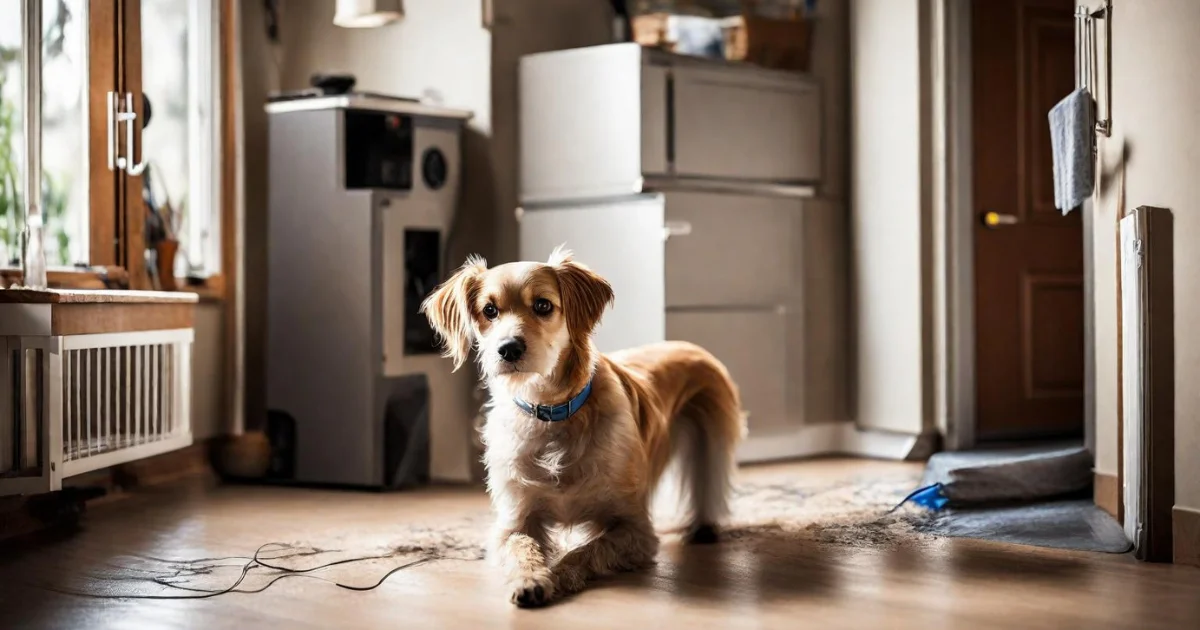Introduction
Welcoming a neutered male dog into your home comes with joys and responsibilities. While neutering can bring about positive changes in behavior, such as reducing aggression and unwanted mating behaviors, some pet owners encounter challenges with their neutered male dogs marking in the house. In this comprehensive guide, we’ll delve into the reasons behind this behavior and provide effective strategies to address and prevent it.
The Nature of Neutered Male Dog Marking in the House
Neutering is a common practice to control the pet population and curb certain behaviors. However, some neutered male dogs may continue to mark territory inside the house. This behavior, often attributed to hormonal imbalances and instinctual urges, can be distressing for pet owners. Understanding the underlying reasons is crucial to finding a solution.
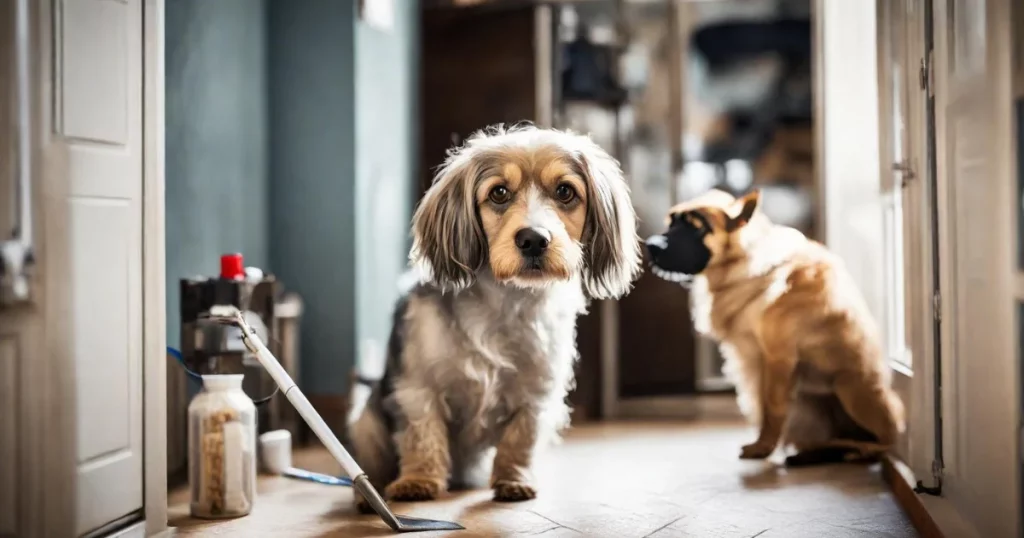
Hormonal Influences
Even after neutering, residual hormones can linger in a dog’s system. This hormonal influence may trigger marking behaviors as the dog attempts to assert dominance or communicate with other animals in the household. Recognizing the role of hormones is the first step in addressing this issue effectively.
Identifying Triggers
To combat neutered male dog marking, it’s essential to identify the triggers that prompt this behavior. By recognizing specific situations or stimuli, pet owners can implement targeted strategies to modify their dog’s actions.
Environmental Stressors
Changes in the home environment, such as new furniture, visitors, or other pets, can stress a neutered male dog, leading to marking behavior. Creating a calm and consistent environment is crucial in reducing stress-related marking incidents.
Medical Considerations
In some cases, marking may be linked to underlying health issues. Consult with your veterinarian to rule out urinary tract infections, bladder stones, or other medical conditions that could contribute to your dog’s marking behavior.
Addressing Neutered Male Dog Marking
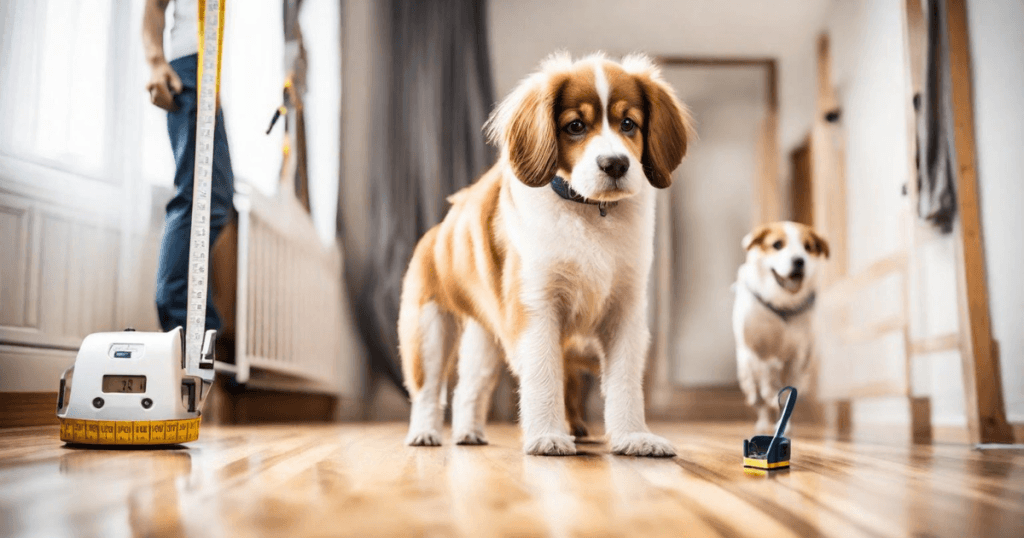
Once you’ve identified the triggers, it’s time to implement practical solutions to address and minimize marking behavior.
Consistent Training
Consistency is key when training a neutered male dog not to mark inside the house. Utilize encouraging feedback methods, like treats and applause, to compensate for acceptable conduct. Corrective actions should be immediate, ensuring the dog associates the correction with the undesirable behavior.
Establishing Boundaries
Create clear boundaries within the home to discourage marking. Use child entryways or shutways to restrict admittance to specific regions. Gradually expand your dog’s territory as he demonstrates improved behavior.
Enrichment Activities
Provide mental and physical stimulation for your neutered male dog. Engage in regular walks, playtime, and interactive toys to keep him stimulated and satisfied. A tired dog is less likely to engage in marking behaviors.
Utilizing Pheromone Products
Consider using pheromone-based products designed to discourage marking. These products emit scents that signal to the dog that the marked area is not suitable for territory claiming.
Advanced Strategies for Long-Term Success
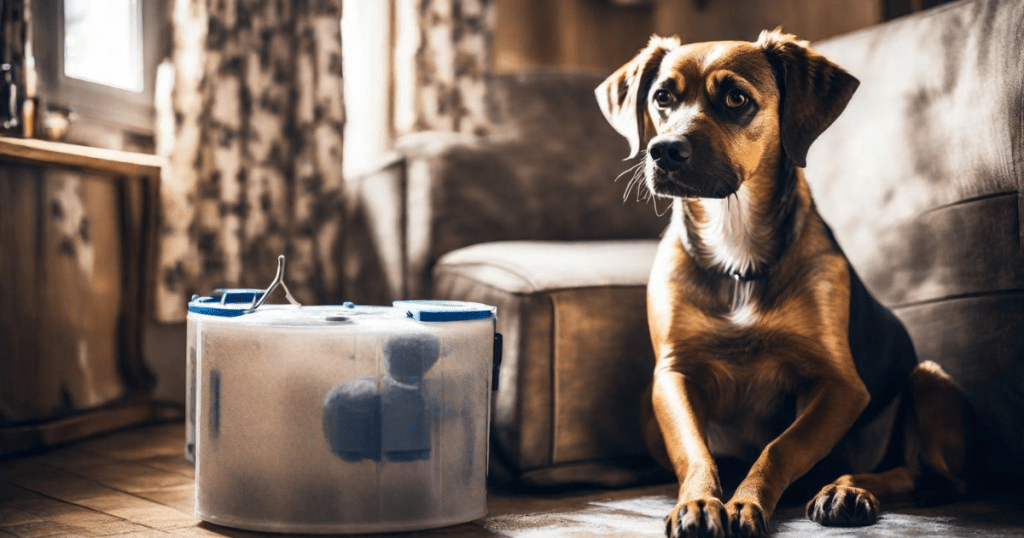
Now that we’ve covered the fundamentals of addressing neutered male dog marking, let’s delve into advanced strategies to ensure long-term success in modifying your dog’s behavior.
Tracking and Monitoring
Maintaining a log of your dog’s marking incidents can provide valuable insights. Note the time, location, and potential triggers for each occurrence. This detailed record can help you identify patterns and adjust your training approach accordingly.
Professional Behavioral Consultation
If your dog’s marking behavior persists despite your efforts, seeking the expertise of a professional dog behaviorist or trainer can be immensely beneficial. They can conduct a thorough assessment of your dog’s behavior, tailor a training plan to address specific issues and provide guidance on advanced techniques.
Neutering Timing Considerations
While neutering is a common practice to curb certain behaviors, the timing of the procedure can impact its effectiveness. Consult with your veterinarian to determine the optimal age for neutering based on your dog’s breed, size, and individual characteristics.
Consistent Routine and Structure
Dogs thrive on routine and structure. Establish a consistent daily schedule for feeding, walks, playtime, and bathroom breaks. Predictability can help reduce stress and anxiety, contributing to a more relaxed and well-behaved pet.
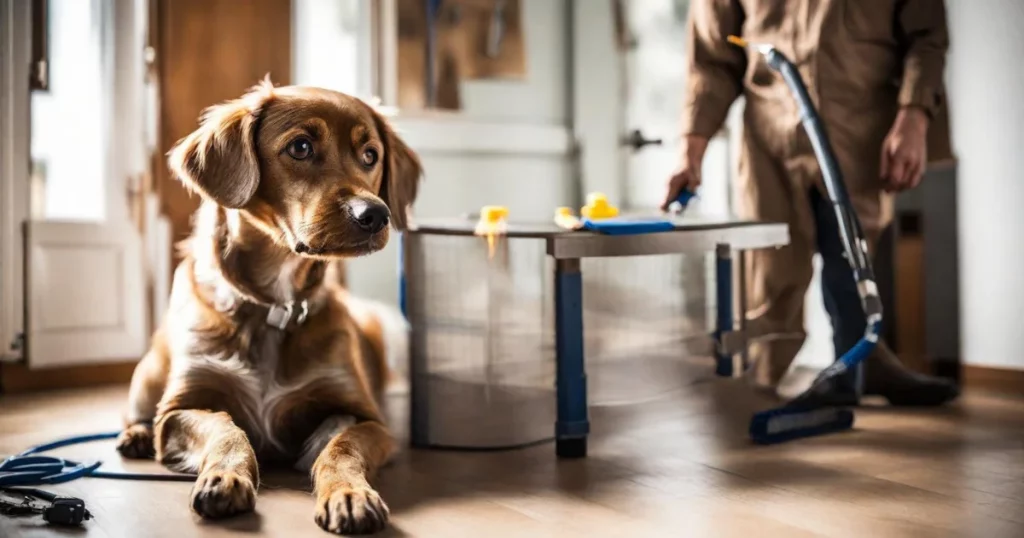
Positive Reinforcement Games
Incorporate positive reinforcement games into your training regimen. Interactive games not only provide mental stimulation but also strengthen the bond between you and your dog. Consider puzzle toys that dispense treats as rewards for problem-solving, keeping your dog engaged and mentally active.
Calming Aids
Explore the use of calming aids, such as pheromone diffusers or calming collars. These products release substances that mimic natural canine pheromones, promoting a sense of security and calmness. Introduce these aids in areas where your dog tends to mark to create a soothing environment.
Collaboration with Veterinarian
Maintain open communication with your veterinarian throughout the behavior modification process. Share your progress, discuss any challenges, and inquire about additional medical interventions if needed. A collaborative approach ensures that both behavioral and medical aspects are addressed comprehensively.
Sustaining Behavioral Progress
In the ongoing effort to address and prevent neutered male dog marking in the house, sustaining behavioral progress is essential. This involves not only maintaining the established routines and techniques but also adapting to any changes in your dog’s environment or health.
Regular Health Check-ups
Schedule regular health check-ups with your veterinarian to ensure your dog’s well-being. Regular examinations can help detect any underlying health issues that may contribute to marking behavior. Addressing potential medical concerns promptly is crucial for maintaining your dog’s overall health and behavior.
Environmental Enrichment
Continue to enrich your dog’s environment with new and stimulating experiences. Introduce novel toys, rotate existing ones, and vary walking routes to keep your dog mentally engaged. Mental stimulation is a powerful tool in preventing boredom-related marking behaviors.
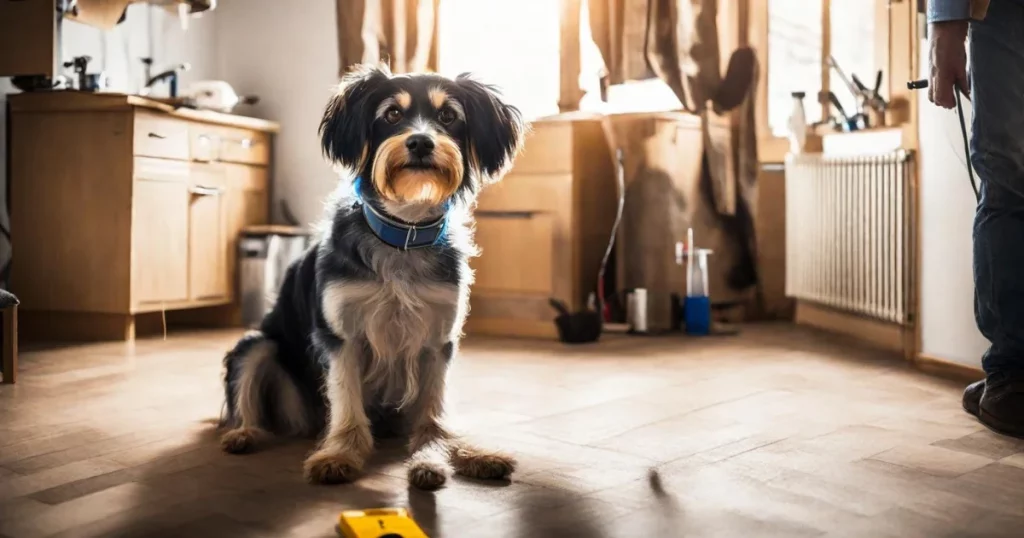
Reinforce Positive Behaviors
Consistently reinforce positive behaviors through praise, treats, and affection. Celebrate milestones in your dog’s progress, whether it’s an extended period without marking or successful adherence to commands. Positive reinforcement strengthens the desired behaviors and fosters a positive relationship between you and your pet.
Adapting Training Techniques
As your dog progresses, be open to adapting training techniques. Each canine is interesting, and what works for one may not work for another. Monitor your dog’s response to training methods and be willing to modify your approach to better suit their individual needs.
Consideration of Life Changes
Major life changes, such as moving to a new home or introducing new family members, can impact your dog’s behavior. During such transitions, provide extra support and reinforcement. Maintain familiar routines as much as possible to help your dog adjust seamlessly.
Behavioral Reinforcement Games
Continue incorporating behavioral reinforcement games into your routine. These can include advanced obedience exercises, scent games, or agility training. Each canine is interesting, and what works for one may not work for another.
Community and Support
Engage with the dog owner community and seek support from others who may have faced similar challenges. Online forums, local dog training classes, or social media groups can offer valuable insights, encouragement, and advice to navigate any hurdles in your dog’s behavioral journey.
Conclusion
In conclusion, understanding and addressing neutered male dog markings in the house requires a combination of knowledge, patience, and consistent effort. By recognizing hormonal influences, identifying triggers, and implementing targeted solutions, pet owners can create a harmonious living environment with their beloved canine companions.
Addressing neutered male dog marking in the house requires a multifaceted approach, combining basic training techniques with advanced strategies for long-term success. By understanding the root causes, identifying triggers, and implementing consistent training, you can create a harmonious living space for both you and your beloved pet.
Remember, every dog is unique, and patience is key in the journey toward behavioral improvement. With dedication and a well-rounded approach, you can successfully navigate and overcome marking challenges, fostering a happy and well-adjusted relationship with your neutered male dog.
Other Articles
- Urban Dog House Design Trends: Stylish Living for Your Pooch
- The Dog House Grooming Essentials for Every Dog Owner
- Modern Dog Houses: The Perfect Blend of Comfort and Contemporary Design
- Boucle Dog Beds: A Stylish Addition to Your Home Décor
- Baby Animal Names From A to Z, Cute Names for Young Creatures
FAQs
| Question | Answer |
|---|---|
| How can I prevent my dog from marking indoors? | To prevent indoor marking, establish consistent routines, provide mental and physical stimulation, and use positive reinforcement during training. |
| What could be the hormonal influences on a neutered male dog’s marking behavior? | Hormonal influences, even after neutering, may trigger marking as residual hormones persist. Understanding and addressing these hormonal factors is crucial in modifying the behavior. |
| Are there specific triggers for neutered male dog marking? | Yes, triggers may include environmental stressors like new furniture or visitors. Identifying these triggers helps in implementing targeted strategies to modify the dog’s marking behavior. |
| How can I create a calm environment for my dog to reduce marking incidents? | Reduce environmental stressors, create consistent routines, and consider using calming aids or pheromone products to establish a calm and secure atmosphere for your neutered male dog. |
| Is professional assistance necessary for modifying a dog’s marking behavior? | Seeking professional help from a dog behaviorist or trainer may be beneficial, especially if marking behavior persists despite your efforts. They can provide personalized strategies for your dog. |
| What is the role of a consistent routine in preventing marking behavior? | Dogs thrive on routine and structure. Establishing a consistent daily schedule for feeding, walks, and playtime reduces stress and contributes to a more well-behaved and relaxed neutered male dog. |
| Are there advanced strategies for addressing long-term marking issues? | Advanced strategies include tracking and monitoring behavior, considering optimal neutering timing, incorporating positive reinforcement games, and collaborating with a veterinarian for a comprehensive approach. |
| How can I adapt training techniques as my dog progresses? | Monitor your dog’s response to training methods and be willing to modify your approach. Each dog is unique, and adapting training techniques ensures that they are effective and tailored to your dog’s individual needs. |
| What role does mental stimulation play in preventing marking behaviors? | Mental stimulation, provided through enrichment activities and interactive games, is crucial in preventing boredom-related marking. A mentally stimulated dog is less likely to engage in undesirable behaviors. |
| Why is maintaining community and support important in addressing dog behavior issues? | Engaging with the dog owner community provides valuable insights, encouragement, and advice. Seeking support from others who have faced similar challenges creates a network for sharing experiences and solutions. |

